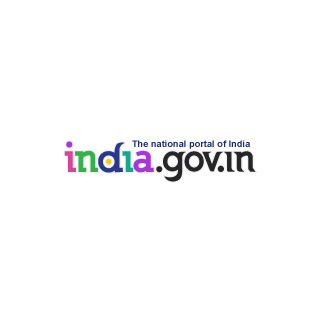
Profile
India is one of the oldest civilizations in the world with a kaleidoscopic variety and rich cultural heritage. It has achieved all-round socio-economic progress since its Independence. India has become self-sufficient in agricultural production and is now one of the top industrialised countries in the world and one of the few nations to have gone into outer space to conquer nature for the benefit of the people. It covers an area of 32,87,263 sq. km (1,269,346 sq mi), extending from the snow-covered Himalayan heights to the tropical rain forests of the south. As the 7th largest country in the world, India stands apart from the rest of Asia, marked off as it is by mountains and the sea, which give the country a distinct geographical entity. Bounded by the Great Himalayas in the north, it stretches southwards and at the Tropic of Cancer, tapers off into the Indian Ocean between the Bay of Bengal on the east and the Arabian Sea on the west. Lying entirely in the northern hemisphere, the mainland extends between latitudes 8° 4' and 37° 6' north, longitudes 68° 7' and 97° 25' east and measures about 3,214 km from north to south between the extreme latitudes and about 2,933 km from east to west between the extreme longitudes. It has a land frontier of about 15,200 km. The total length of the coastline of the mainland, Lakshadweep Islands and Andaman & Nicobar Islands is 7,516.6 km.GEOGRAPHY

| Particulars | Description | |
|---|---|---|
| Location | The Indian peninsula is separated from mainland Asia by the Himalayas. The Country is surrounded by the Bay of Bengal in the east, the Arabian Sea in the west, and the Indian Ocean to the south. | |
| Geographic Coordinates | Lying entirely in the Northern Hemisphere, the Country extends between 8° 4' and 37° 6' latitudes north of the Equator, and 68° 7' and 97° 25' longitudes east of it. | |
| Indian Standard Time | Physical, Political, Population, Rain fall, Railway & Sea Routes, Road, Soil, etc. |
PEOPLE

| Particulars | Description |
|---|---|
| Population | India's population, as on 1 March 2011 stood at 1,210,193,422 (623.7 million males and 586.4 million females). |
| Population Growth Rate | The average annual exponential growth rate stands at 1.64 per cent during 2001-2011. |
| Birth Rate | The Crude Birth rate was 18.3 in 2009. |
| Death Rate | The Crude Death rate was 7.3 in 2009. |
| Life Expectancy Rate | 65.8 years (Males); 68.1 years (Females) in the period 2006-2011. |
| Sex Ratio | 940 females per 1000 males according to |
| Nationality | Indian |
| Ethnic Groups | All the five major racial types - Australoid, Mongoloid, Europoid, Caucasian, and Negroid find representation among the people of India. |
| Religions | According to the 2001 census, out of the total population of 1,028 million in the Country, Hindus constituted the majority with 80.5%, Muslims came second at 13.4%, followed by Christians, Sikhs, Buddhists, Jains, and others. |
| Languages | There are 22 different languages that have been recognised by the Constitution of India, of which Hindi is an Official Language. Article 343(3) empowered Parliament to provide by law for continued use of English for official purposes. |
| Literacy | According to the provisional results of the , the literacy rate in the Country stands at 74.04 per cent, 82.14% for males and 65.46% for females. |
GOVERNMENT

| Particulars | Description |
|---|---|
| Country Name | Republic of India; Bharat Ganrajya |
| Government Type | Sovereign Socialist Secular Democratic Republic with a Parliamentary system of Government. |
| Capital | New Delhi |
| Administrative Divisions | and . |
| Independence | 15th August 1947 (From the British Colonial Rule) |
| Constitution | The came into force on 26th January 1950. |
| Legal System | The is the fountain source of the legal system in the Country. |
| Executive Branch | The is the Head of the State, while the is the Head of the Government, and runs office with the support of the who form the Cabinet Ministry. |
| Legislative Branch | The Indian Legislature comprises of the (House of the People) and the (Council of States) forming both the Houses of the Parliament. |
| Judicial Branch | The Supreme Court of India is the apex body of the Indian legal system, followed by other High Courts and subordinate Courts. |
| Flag Description | The is a horizontal tricolour of deep saffron (kesaria) at the top, white in the middle, and dark green at the bottom in equal proportion. At the centre of the white band is a navy blue wheel, which is a representation of the Ashoka Chakra at Sarnath. |
| 26th January () 15th August () 2nd October (Gandhi Jayanti; Mahatma Gandhi's Birthday) |

